Why We Must Continue Telling Stories About Those Who Fight for the Future of Our Community.
“That’s Disneyland.”
Just over ten years ago, my documentary (Ola: Health is Everything) premiered during what felt like a season of possibilities in the generations-long struggle to address our most vexing social challenges. I’d called it my love letter to Hawai‘i. At its heart, Ola was a fable about people in rural communities across these islands who, through selfless acts, revealed our paramount impulse: to work together during our toughest times as ‘ohana, as family.
Similarly, the sequel (‘Ike: Knowledge is Everywhere) was a tribute to the people, programs, and partnerships fueling a renaissance in Hawai‘i’s education continuum. Despite the public’s dire perception of that system—low test scores and high achievement gaps, slipping graduation rates and a growing malaise—I once again offered stories of hope as an antidote.
And, as with Ola, the simple act of sharing stories of individuals who had fostered tangible change was inspiring collective action and shifting mindsets about the future. Until one night at a screening in Honolulu, when an audience member rose during the Q&A and identified himself as a Department of Education teacher who’d quit his job earlier that day. He talked about the sclerosis of bureaucracy and the myopia of funders and, speaking directly about ‘Ike’s celebration of a triumphant public school, said simply: “That’s not my experience as a teacher in the system. What you’re showing? That’s Disneyland, that’s fantasy. We need to be more truthful about what’s actually happening.”
Unraveling
In the years that followed, his was not a lone voice of dissent or cynicism, as others also cast the idea of collective, community-driven solutions as nebulous and naïve. These voices and their sentiments echoed in the decade that followed, years that were filled with political turmoil, social upheaval, and deep reckonings amid the global pandemic.
Indeed, the perpetual chaos and carnage of the period from 2015 to the present have taken the divides within our communities and dredged them even deeper, undermining faith in our institutions and in our ability to create a thriving, healthy society.
“To save the world requires faith and courage; faith in reason, and courage to proclaim what reason shows to be true.”
Bertrand Russell, The Prospects of Industrial Civilization

Fictions and Truths
The scale of loss wrought by the pandemic remains unfathomable. And yet perhaps the greatest tragedy is a collective failure to acknowledge that the challenges of one individual, one family, or one community have the potential to irrevocably affect us all; that our fates rise and fall as one.
Another structural fiction laid bare by the pandemic was the myth of scarcity, a concept designed to support the status quo and the power structures within it. The response to COVID proved that resources are not an impediment. It is, instead, a question of choices and of who holds the power to make those choices about where funding flows and to whom.
During the pandemic’s first year, resources flooded into communities, often with few restrictions. Decisions about where dollars would be spent, and how, and for whom, were being made by those closest to the crisis: people in our own communities.
When the gravest danger had passed, organizations that had opened their vaults and lifted restrictions quickly reconsolidated their power, once again leaving the Sisyphean work to the CBOs and nonprofits who are always called to step in and somehow repair the breach.
It’s a pattern that comes and goes with each disaster, be it natural or man-made, and we should be more truthful in calling it out.
“The difference between hope and despair is
a different way of telling stories from the same set of facts.”
Alain de Botton
We must lift one another up with our shared stories and relentlessly point to every source of light around us.
Hope and Despair
We find ourselves once again in urgent and consequential times, where our actions and our inactions will ripple into the future for generations, perhaps to the end of history. Once again, CBOs and nonprofits and community groups are being asked to shoulder the burdens of broken systems they neither created nor have adequate resources to address, while those who profit from those systems sit on their resources, pointing fingers of accountability at everyone but themselves.
There is now, also, a pervasive fear gathering at the edges of our collective work to build a just society. People are afraid to speak out or to stand up. What hope remains for those without power or means?
And what is the virtue of telling “feel-good” stories about our community when, for many, they seem like fantasy in the face of unremitting darkness?

Seeing the Light
To be sure, this is not a call to stick our collective heads in the sand and pretend somehow that the despair around us isn’t real. But when we allow chaos to overwhelm everything, when we only focus on the darkness, when we choose to ignore the goodness all around us because it feels naïve, we end up suppressing our deepest instinct: to do the greatest good for the greatest number.
A community is defined by more than just shared geography or shared ZIP codes. A community is defined by shared values, and by using the strength of those values to solve big problems. It also grows by moving and inspiring others to act.
We are a mimetic culture, a society that thrives on how we view ourselves in relation to others. What we see activates something within, moving us from complacency to action.
We must lift one another up with our shared stories and relentlessly point to every source of light around us, the light emanating from thousands of partners and allies—organizers, land stewards, caregivers, educators—doing all they can to create a just, healthy, and prosperous future not just for the few, but for everyone.
That’s how we will illuminate the way forward, how we will show that hope is all around us if we simply look for it in the dark.


Latest Hawaiʻi News
Read the latest Hawai‘i news about our grant-making, our partners, and how we are spending down


